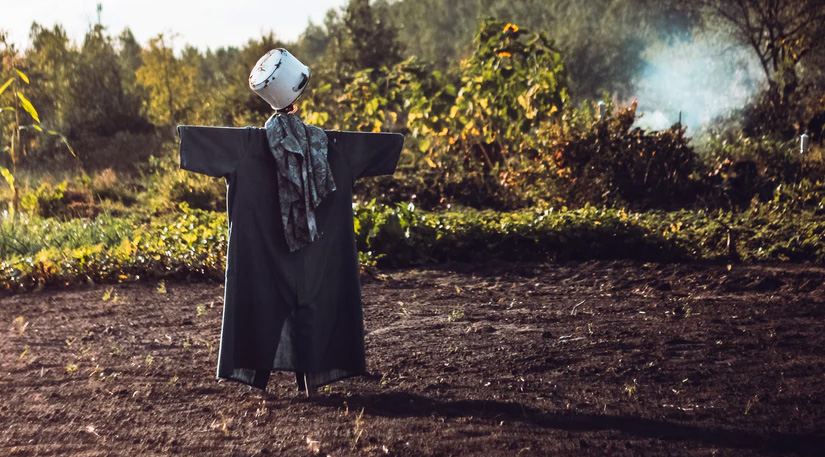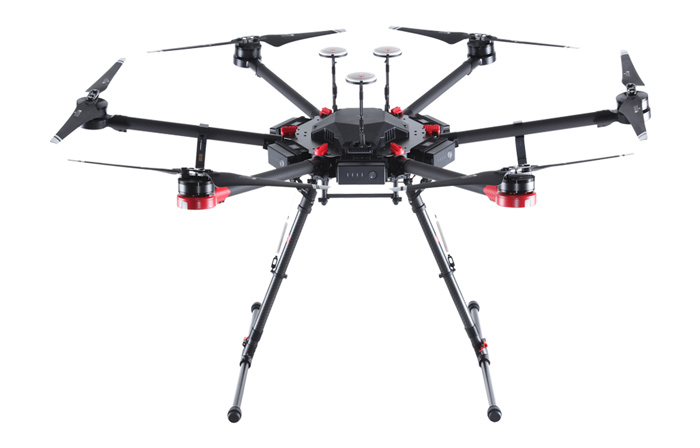
The skies are no longer the sole preserve of birds — not since man perfected powered flight. And now, the birds have drones to contend with.
What Are the Effects of Drones on Birds?
In 2015, Elizabeth Vas, a graduate student conducted a study in to the effect of drones on birds.
She wished to assist Cyleone, a drone manufacturing robotics company that wished to establish a flying protocol for environmentalists who were potential investors in their UAVs.
For her experiment, Vas used a quadcopter controlled from the ground, the sort of highly maneuverable drone which environmentalists would prefer when creating inventories.
The experiment needed to take place in a bird-rich area where she could get the consent of the relevant authorities. After looking around she settled on the Wetland of the Camargue near Montpellier, France.
The quadcopter was fitted with a GoPro camera and during the experiment many variables were taken into consideration like angle of approach, drone colour, approach speed, and weather conditions.
After 204 approaches, Vas realized that birds could indeed be scared off by drones. But how much they were scared depended on the angle of approach and the drone’s position relative to the bird.
Birds tended to be scared more when the drone approached at right angles (90 degrees) to them and if they came from above.
Flocks of birds also showed a much stronger response than lone birds.
Further research remains to be done to investigate the effect of factors like drone size, nesting season, and territoriality. But the potential for drones to be used for scaring away potentially problematic bird flocks is quite huge.
- 12MP / 2. 7K Quad HD 3-Axis Gimbal Camera
- Up to 30 Minutes of Flight Time
- Stream HD Video from up to 2. 5 Miles
Are You Allowed to Scare Birds with Drones?
That would depend on the area you intend doing the scaring. In some areas, drone regulations could restrict the purposes to which you could apply your drone.
Environmental restrictions could also exist, and these would play a part in determining whether you can use drones to scare birds.
A good rule of thumb is to check with the relevant authorities to see what the available options are, and also if you need a license to fly your drone in the first place.
Where Are Drones Used to Scare Birds?
Drones are being used to scare birds in mainly the agricultural and aviation industries where unregulated interaction with birds could result in hundreds of millions of dollars every year.
For example, Marlborough Vineyard in New Zealand is slowly making the transition from traditional methods of bird control to drones.
Tactics they previously relied on to police bird hotspots include flying fake hawk kites, netting, gas guns, reflective tape, shotguns, and even releasing predators like hawks. But health and safety concerns are making them turn to drones more and more.
Drones don’t give off the loud bangs that come with shot guns and gas guns when discharged. And even for people who have an issue with the noise drones make, they can safely approach the pilot to make a complaint.
Management also realized that using drones to scare birds allowed them to cover a large area in a shorter amount of time.
Using shotguns and gas guns requires people to use motorbikes to reach bird hotspots and shooting. The procedure required people to ride round and round in the farm trying to scare the birds away.
On the other hand, drones allow people to sit at the top of a 120-150 hectare vineyard and easily cover it all in a short amount of time.
Not only does this reduce the need for fuel, it reduces the need for cartridges as well, leading to reduced overall cost of managing the farm.
Apart from the agricultural sphere, the idea of using drones to scare birds is also gaining grounds in the aviation industry.
Ordinarily, drones are not allowed anywhere near an airport for fear of interfering and endangering manned flights. The FAA requires drone pilots to keep their drones a mandatory 5 miles from any airport.
And this is the reason why it is a little surprising that at least one airport is availing themselves of drone technology to chase away birds.
Birds present a serious problem for airports.
Collisions with birds and other wildlife cause more $1.2 billion in damage to the aviation industry every year worldwide.
Between 1990 and 2013, in the United States, 142,000 bird collisions were behind the destruction of 62 civilian airplanes, injuring 279 people, killing 25.
Likewise in the UK, there were a recorded 1,835 bird collisions in 2016 alone; about eight for every 10,000 flights in the region.
And according to experts, Korean civil aircraft suffered more than 1,000 bird collisions in the years between 2011 and 2016.
These are dire stats, and they make a compelling argument for bending the rules a little in order to preserve life.
Airports are large open spaces, and as such they attract large flocks of birds seeking food and shelter. And the presence of these birds presents a danger during the critical take-off and landing phases of flight.
Birds quickly get used to the usual methods which airports use to scare them including firing off compressed air cannons or devices that create a loud noise when activated. Even using dogs and falcons has been found unreliable in solving the problem in the long run.
So some airports have begun testing drones to scare birds. One of the drones being tested is known as Robird. Robird looks and behaves like a female peregrine falcon, possessing moves that mimic the predatory bird in flight.
Pilots seek resting birds in areas found within an airport’s boundaries that pose a risk to flights and chases them away.
Clear Flight Solutions in Holland recently completed a trial of the system in Edmonton airport in Alberta, Canada. After obtaining flight clearance to fly within airport grounds, they were able to demonstrate how the system worked for the benefit of stakeholders.
What Technology Is Used?
Various types of technology are used to create drones to scare birds. We have already mentioned Robird, a drone that looks like and mimics the female peregrine falcon.
Other methods are also exist which take advantage of or try to imitate nature’s example.
For example, scientists have been studying flocking algorithms to better understand how flocks of birds avoid predators. The goal is to use this information to create a drone that could single-handedly guide entire flocks away from an area without breaking their formation.
Other technology used to create drones to scare birds include drones that send out distress bird calls or predator bird calls whenever they fly over bird hot spots.
The tech company, Precision Hawk has also designed drones that resemble hawks, capable of collecting date on crop production and crop protection.
Best Bird Scaring Drones
DJI Matrice 600 Pro Bird Control System
Dubbed “The Scarecrow”, the DJI Matrice 600 Pro Bird Control Drone System comes with a portable, highly foldable design that can be easily folded into a protective case for easy transport.
Conversely, setup time from unpacking to flight takes mere minutes.
This device is capable of carrying a payload of 5.5kg and comes with a bird control system that has been proven effective against numerous bird types.
Notable benefits of this drone include:
- Highly portable and foldable, requiring only a few minutes to unpack and fly
- Quick release bird control system with a proven track record against various bird types
- Smart power multi-bay charging system that consists of individually controlled circuitry enabling you to individually charge and deep cycle up to 6 Matrice 600 batteries at once
- Capable of carrying a payload of up to 5.5kg
ProHawk UAV Bird Control Drone
The design of the ProHawk UAV combines a sonic bird repeller with autonomous flight GPS technology. It is one of the most bird-friendly devices that anybody can use. You can keep your crops bird free without harming any birds or the environment.
The design of this drone mimics a predatory look which, when coupled with the naturally recorded predator cries, comes across as a real and present danger for the unwanted birds.
It comes with autonomous flight abilities which you can simply program so the drone launches and patrols the land on its own. Pilots can establish “waypoints” to better customize the patrol areas using GPS technology.
Notable benefits of this drone include:
- Effective bird control device, combining frightening physical presence with effect predator sounds
- Easy to maintain and operate with the latest GPS technology
- Less expensive than falconers and a more reliable alternative
- Autonomous feature means less man-hours required for keeping birds away
- Able to cover large areas very effectively and quickly
Aerodrone Avian Scout
The Aerodrone Avian Scout is a drone that is designed to scare a variety of birds, including: crows, rosellas, parrots, cockatoos, starlings, and more. It takes advantage of leading edge sonic bird deterrent technologies to ensure that your crops are never in danger from any birds.
The Aerodrone is capable of up to 25 minutes of flight time per battery, covering 200 acres in that time. Adequately weather resistant, it can withstand winds that travel at 30 knots and light rain.
Notable benefits of this drone include:
- Capable of scaring away many varieties of birds, leveraging leading edge sonic technology
- Covers a wide area in one flight—up to 200 acres in 25 minutes of flight time
- Weather resistant, capable of flying in 30 knots windspeed and light rain
Would Any Drone Work to Scare Birds?
Birds have shown themselves to be highly unconcerned about the new devices that are taking up their air space.
Unless in a few cases of territorial birds that attack drones, birds, in most cases, simply ignore drones when they pass by.
That’s why when creating specific drones to scare birds, manufacturers incorporate other unique features for that purpose. Examples include, drones that are a particular shape, make a particular sound, or actually look like and mimic predatory birds.
If you are in need of drones to scare birds, those are the ones you should buy.
We may receive compensation on qualifying purchases via our links. This does not change how we review items. For more information, please read our affiliate disclosure.



Would like to know how long it would take to get one and of course price. Does it have a squawker that makes noise to scare birds?
Looking for drone to keep crows away from my yard. How high and how far does the drone go?
Thank you
Interested in drones that would scare seagulls from a close in Seaton, Devon from May to August when they fly back to mate & make terrible noise.
Please contact us with prices/options either to my email address or ring 07812426741.
Many thanks
P. S. – have a Management meeting soon so be good to have this information to hand.
I understand autonomous flights for bird scaring drones are prohibited in Australia, not sure we can justify the time to fly manually, or outwit the birds!